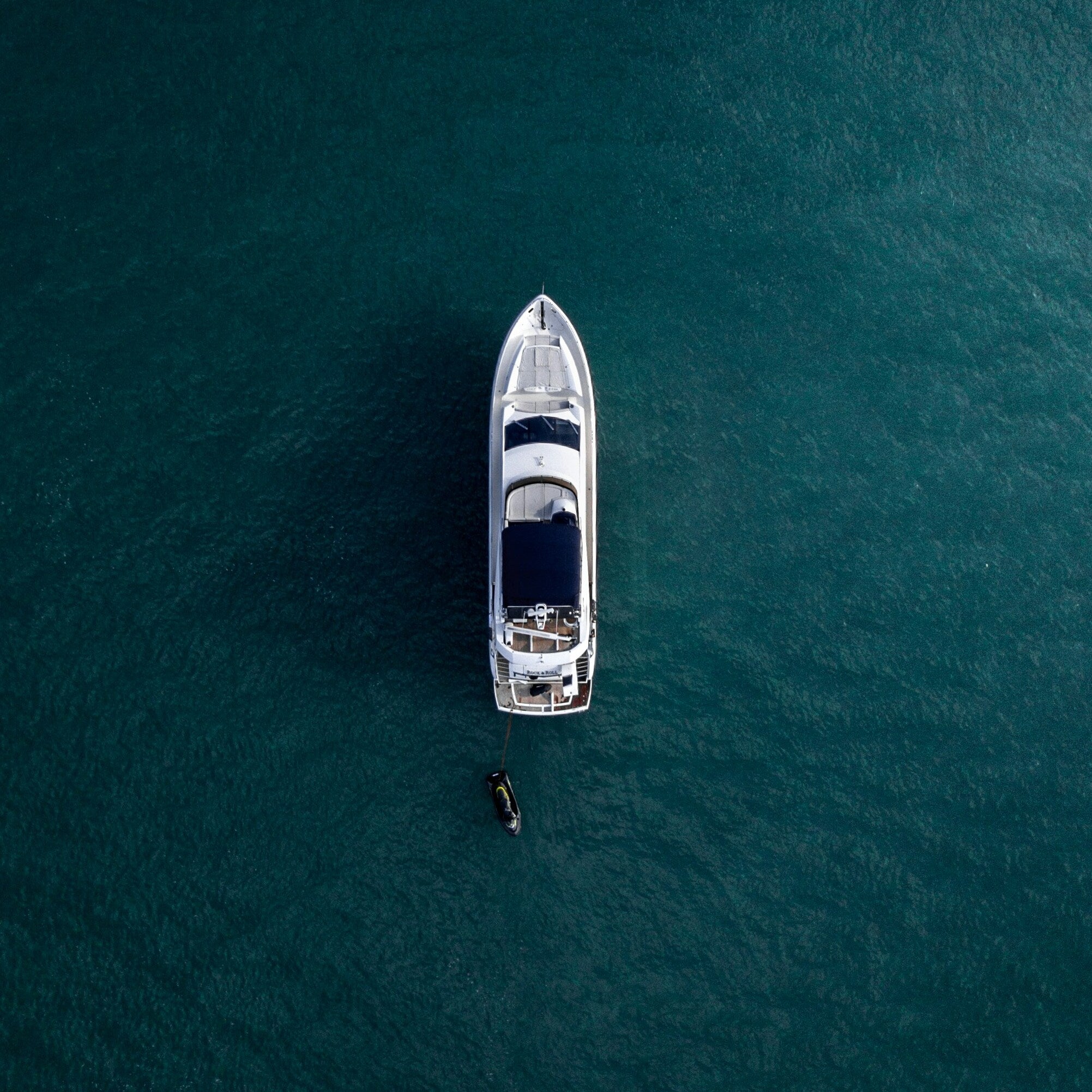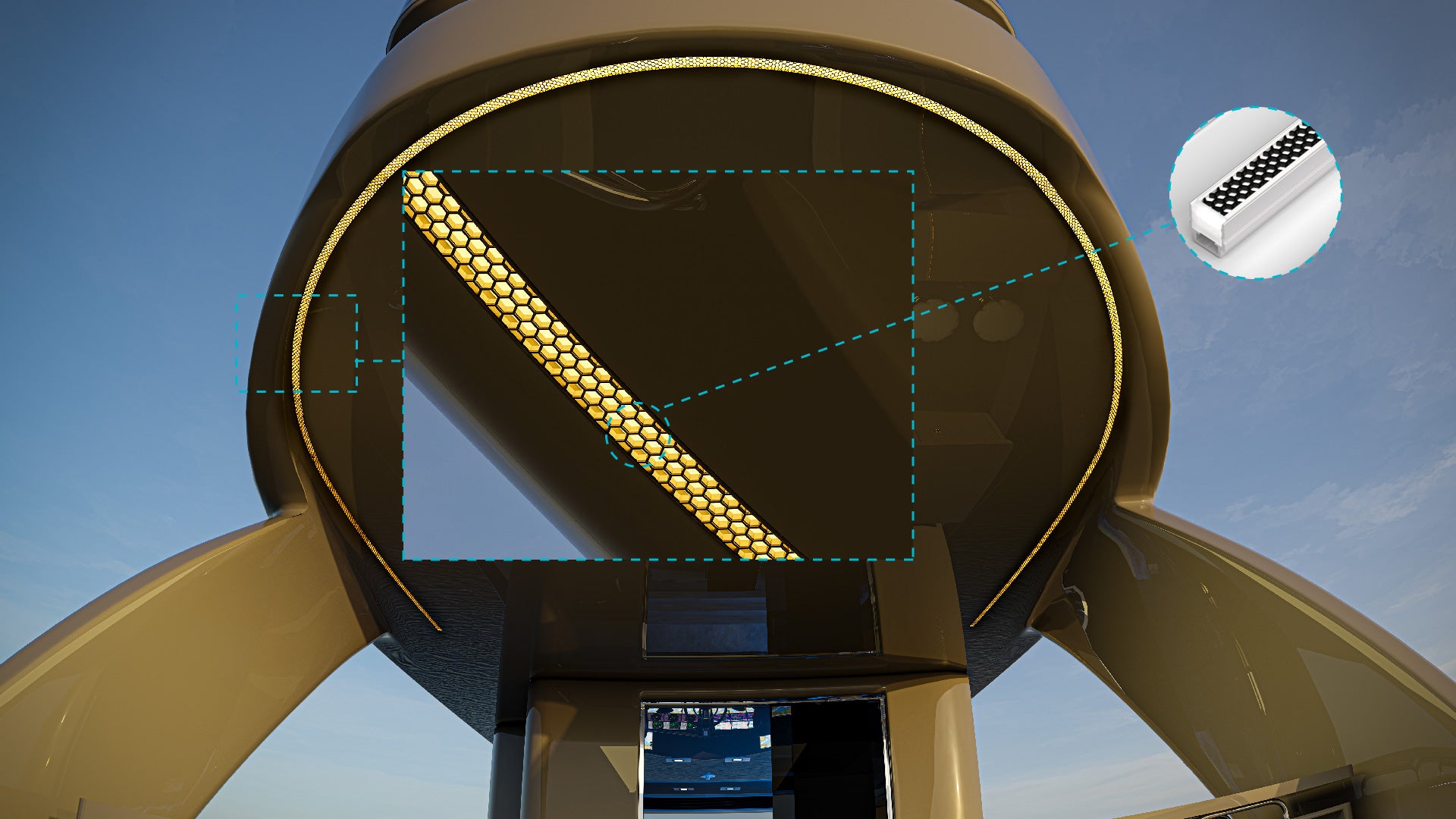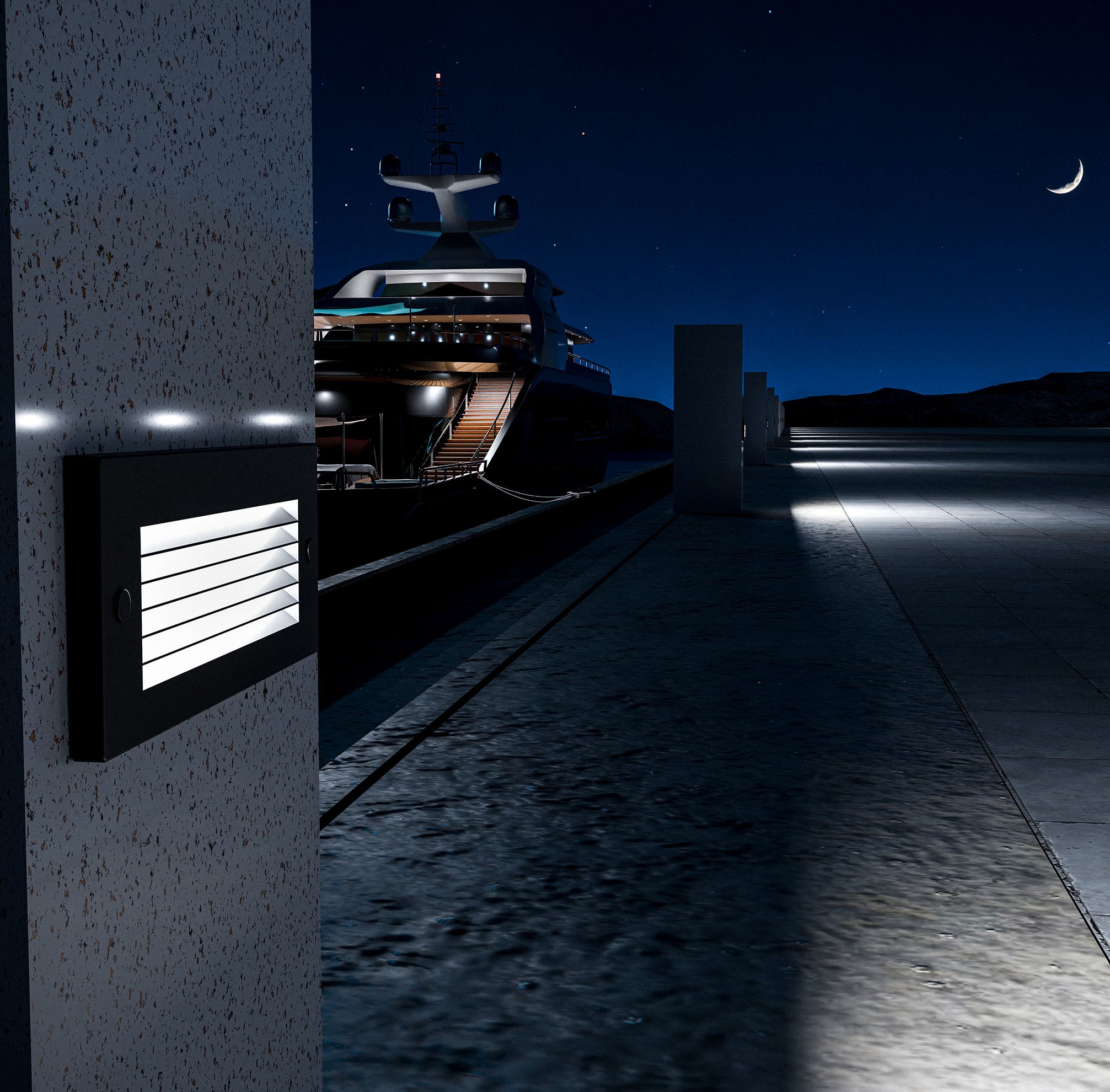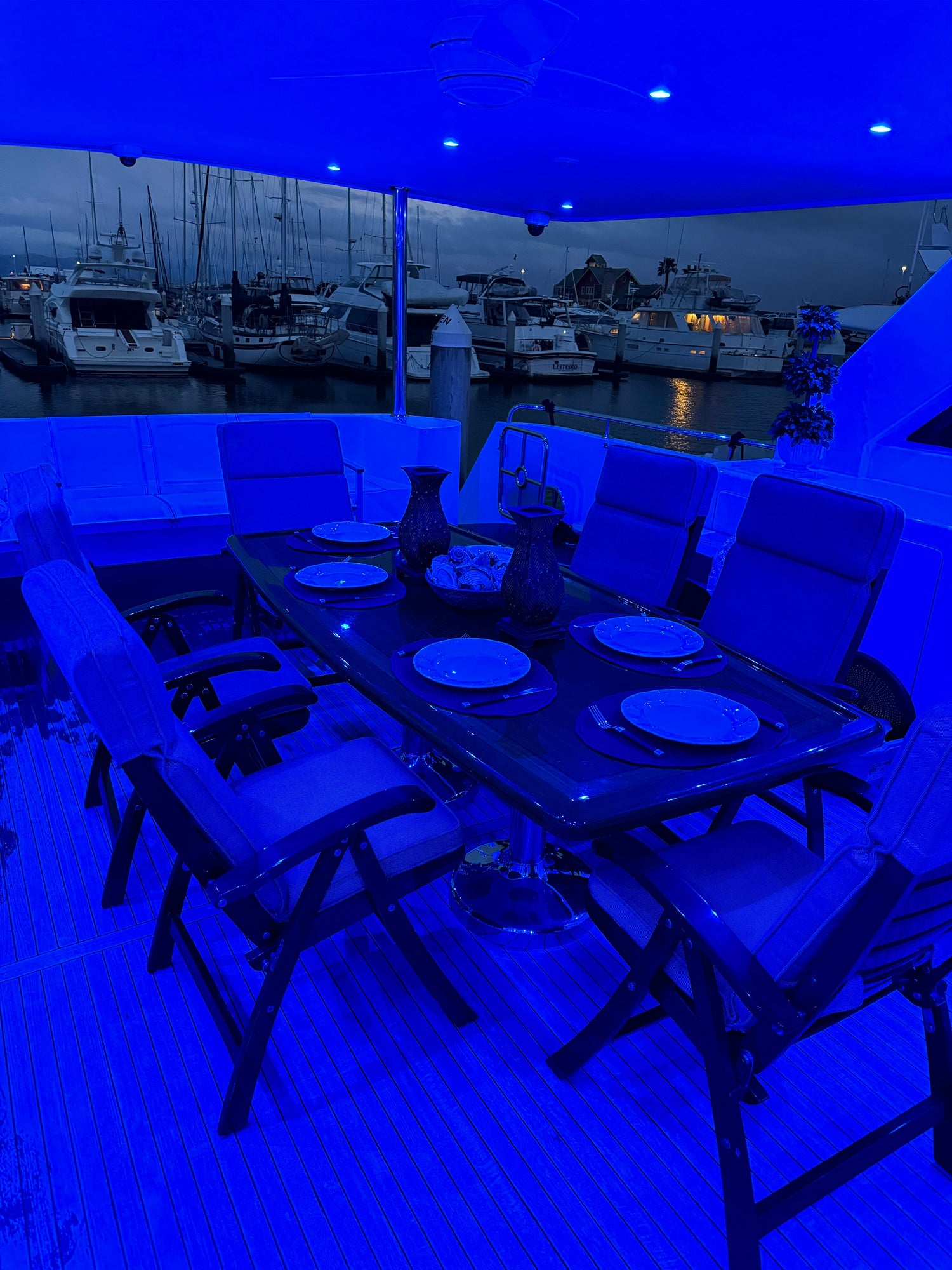LED lighting has revolutionized the marine industry, offering unmatched energy efficiency, durability, and versatility for boat owners. Despite these advantages, several persistent myths continue to prevent some boaters from fully embracing marine-grade LED lighting. Whether it’s concerns about cost, performance, or reliability, these misconceptions often stem from outdated information or experiences with poor-quality products.
In this blog, we’ll tackle the five most common myths about marine LED lighting, providing clear explanations to separate fact from fiction. By the end, you’ll understand why LED lighting is not only a smart upgrade but an essential choice for modern boating.
Myth 1: LED Lights Are Not Bright Enough for Marine Use
The Truth About LED Brightness
One of the most common misconceptions about LED lights is that they cannot produce the same level of brightness as traditional halogen or incandescent bulbs. However, modern marine-grade LED fixtures are engineered to deliver intense, clear illumination while consuming far less power. The key lies in understanding lumens rather than watts. While watts measure energy consumption, lumens measure the actual light output. Today’s marine LEDs are capable of producing higher lumens per watt than older technologies, ensuring exceptional brightness for navigation, cabin interiors, and underwater lighting. Additionally, LED lights offer better light control and beam focus, which further enhances visibility and reduces glare.
Why This Myth Persists
Early LED technology had limitations in brightness, and many boaters formed their opinions based on those initial models. Additionally, poorly manufactured, non-marine-grade LEDs often fail to deliver the expected output, giving the entire technology an undeserved reputation. Modern LEDs, however, have addressed these shortcomings with advanced engineering and high-quality components, ensuring bright, consistent lighting across all marine applications.
Myth 2: LED Lights Are Too Expensive
The Long-Term Cost Benefits of LED Lighting
While it’s true that the initial cost of marine-grade LED lights is higher than traditional options, the long-term financial benefits far outweigh the upfront investment. LED lights are incredibly energy-efficient, consuming up to 80% less power while delivering superior illumination. This means lower energy bills, reduced reliance on onboard batteries, and fewer generator cycles, ultimately saving money on fuel and battery replacements. Additionally, LEDs have an operational lifespan of up to 50,000 hours, which far surpasses the lifespan of traditional halogen or incandescent bulbs. This drastically reduces the frequency and cost of replacements, making LEDs a cost-effective choice over time.
Why This Myth Persists
The misconception stems from focusing solely on the initial purchase price rather than considering the total cost of ownership. While LEDs may cost more upfront, the savings in maintenance, replacements, and energy consumption quickly balance the scales. Boaters who prioritize long-term value over short-term costs recognize the financial wisdom of switching to LEDs.
Myth 3: LED Lights Can’t Withstand Harsh Marine Environments
The Durability of Marine-Grade LED Lights
Marine environments are notoriously harsh, with constant exposure to saltwater, humidity, and fluctuating temperatures. However, marine-grade LED lights are specifically designed to endure these conditions. Built with corrosion-resistant materials such as marine-grade stainless steel or anodized aluminum, and featuring waterproof ratings like IP67 and IP68, these fixtures are engineered to resist water ingress, salt damage, and physical impacts. Additionally, marine LEDs are less prone to vibrations and shocks, making them ideal for rough seas or high-speed cruising.
Why This Myth Persists
The myth often arises from experiences with low-quality or non-marine-rated LED products being used in inappropriate conditions. Poor-quality fixtures with insufficient waterproofing or inadequate materials are bound to fail in marine environments. To ensure durability, boaters must prioritize certified marine-grade LED fixtures designed specifically for onboard use.
Myth 4: LED Lights Are Difficult to Install on Boats
The Ease of Installing Marine LED Lights
Many boat owners assume that upgrading to LED lights requires complex rewiring or professional intervention. However, modern marine LED lights are often designed with plug-and-play features, allowing for easy retrofitting into existing lighting systems. Many fixtures use standard marine electrical connections, eliminating the need for extensive modifications. Additionally, smart LED systems come with user-friendly mobile apps and remote controls, simplifying setup and operation. While certain installations, such as integrated underwater lighting systems, may require professional assistance, most LED upgrades are straightforward DIY projects.
Why This Myth Persists
The misconception often comes from experiences with older LED systems or incompatible fixtures that required extensive rewiring. Additionally, poorly written installation guides can create unnecessary confusion. Today’s marine-grade LEDs are designed for compatibility, user-friendliness, and hassle-free installation.
Myth 5: LED Lights Are Only for Luxury Boats
LED Lighting for Every Boater
LED lighting has become widely accessible, with options available across a variety of price points. While it’s true that luxury yachts often feature custom RGB lighting, underwater LEDs, and advanced smart systems, more affordable LED options are readily available for smaller boats and fishing vessels. Simple upgrades such as LED navigation lights, deck fixtures, or cabin lights offer significant benefits without requiring a large investment. Additionally, the energy savings and durability provided by LEDs make them a valuable upgrade for any vessel, regardless of size or budget.
Why This Myth Persists
Early adoption of marine LED lights was largely seen in the luxury boating sector, creating an association with high-end yachts. However, the growing popularity and affordability of LED technology have made it accessible to all types of boat owners, from weekend anglers to long-distance cruisers.
The Benefits of Switching to Marine LED Lighting
The advantages of marine LED lighting go far beyond energy savings. LEDs provide brighter, more focused illumination while consuming less power. They are incredibly durable, capable of withstanding vibrations, saltwater exposure, and extreme weather conditions. Additionally, smart control options, such as dimming features and automated schedules, offer enhanced convenience and energy efficiency. These benefits make LED lighting a practical and valuable investment for every boater.
Key Considerations When Choosing Marine LED Lights
When upgrading to LED lighting, it’s important to focus on fixtures with high lumens per watt ratios, appropriate waterproof ratings (IP67 or IP68), and materials designed for marine environments. Consider smart lighting systems for added convenience and flexibility, and ensure proper placement for optimal performance.
Marine LED lighting is not just a luxury—it’s a smart, cost-effective upgrade for any boat. By debunking these common myths, it’s clear that LED lights are bright, durable, energy-efficient, and easy to install. For boaters looking to improve safety, aesthetics, and long-term cost savings, marine-grade LED lights are an essential investment.
Discover K2 Lighting's range of marine-grade LED lights designed for efficiency, durability, and superior illumination.





